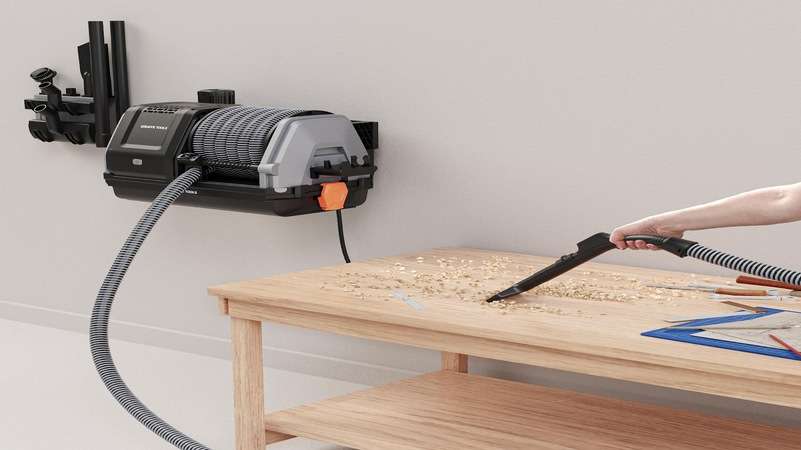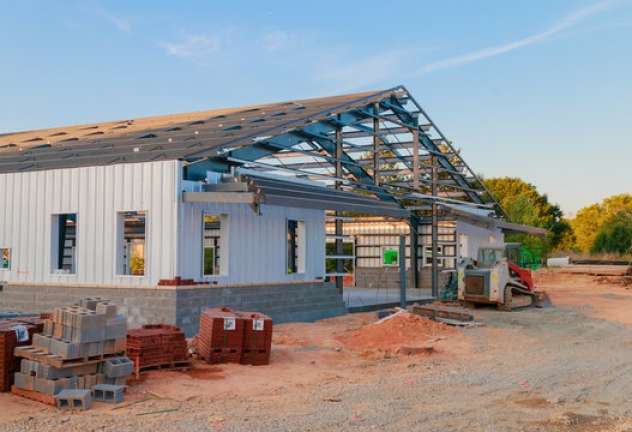Industrial shredders are a vital component for any business is into the recycling, disposal, or sale of materials. They work by cutting paper and other materials into small pieces.
Without these shredders, we wouldn’t have many pharmaceuticals, bottled water brands, and much more. Thus, industrial shredders help the world in many ways.
In this article, we will discuss how industrial shredders work. As well as why they need in the first place.
Whenever you’re ready to learn about the value of industrial shredders, keep reading.
What Is An Industrial Shredder?
An industrial shredder is a heavy-duty tool that can shred light/dense materials. This occurs to prepare them for destruction, recycling, or sale to other entities. Industrial shredders can handle a wide range of products. This includes paper, cardboard boxes, plastics, and other materials.
Industrial machines may be floor-standing or attach to a wall. They include metal blades that cut through the material. This occurs as it enters an industrial shredder from underneath.
It is then turned into small pieces by powerful rotating drums on either side of the blade assembly. After processing, these broken chunks are sent out of the machine via an exhaust chute.
In some cases, a dust collector. This compartment is at its base for disposal at a landfill or incinerator.
Types of Industrial Shredders
There is a shredder design for every application, for each material. Some industrial shredders can handle paper, plastics, and other materials.
Industrial Shredders are used for large quantities of material that require a stronger blade to cut through. The design for needs other than that of a home office or small business.
Large pieces of cardboard boxes, plastic shopping bags, newspapers, and even computer discs have their edges sliced off by the rotating drums on each side.
Read Also: Stream2watch and Its Alternatives
Thus, reduce in length before being chop into many tiny bits. The shredded particles exit an industrial shredder via a discharge chute at its base.
Let’s examine the common types of industrial shredders.
Single Shaft Shredder
The primary use of a single shaft shredder is for recycling waste. They characterize by a feed hopper. This is the opening where materials are subject to entry.
It’s common for this type of shredder to have one shaft with two blades that rotate in opposite directions.
The purpose is to cut the waste material into smaller pieces. Then to up-end it so that the particles fall out onto a chute or conveyor belt leading away from it on its other side.
Single Shaft Shredders can be used as part of an industrial paper recycling system.
They can chop down cardboard boxes and plastic shopping bags into manageable sizes. But also cut through most types of metal packaging such as cans and tins.
Double Shaft Shredder
For dual shaft shredders, the blades are subject to mount parallel to each other on side of the two shafts. They work together at the same time, inducing a shearing effect on each side simultaneously.
On single-shaft shredders, this occurs by mounting two blades at right angles. As the blade rotates it will “shear” anything caught between them.
On double or dual shafts there will be four blades mount at 90 degrees around both rotating shafts. This means when material enters into the opening where materials are subject to entry then gets cut up, it produces much smaller pieces.
Read Also: AnimeUltima and Its Alternatives
However, it also leaves behind longer strands which can easily clog up any chute leading away from it. These machines do not have a good ‘bagging’ option for removing these long pieces without jamming the machine up.
Industrial shredders have a specially designed blade to deal with these long strands. They can bag them without jamming because of their design.
This occurs by having one or more blades mounted at an angle where they ‘shear’ material going into the opening but also knock out any foreign materials caught between them.
They’re also three and four-shaft shredders that work similarly but with additional shafts and shearing blades. Read more now about how these machines can shred wood.
Horizontal & Vertical Hammermill Shredders
Horizontal and vertical hammermill shredders work in a similar way to industrial shredders by using blades. There are also two horizontal shafts with hammers attach at different angles.
The five key styles of hammermills are:
- lump breakers
- gravity discharge
- pneumatic unloading
- chain conveyor
- belt-driven machines
They ‘hammer’ material into smaller pieces when they come in contact with them, hence their name.
Grinders
Grinders shave, chip, and grind small pieces of material. The pieces are then discharge from the grinder’s outlet opening where they can either be collected in a bin or container below for further processing; e.g., crushing into smaller particles to make it easier to store and transport before the sale.
There are four types of grinders:
The three main ones are air-swept rotary drum mills, high tonnage horizontal impactors, and vertical eccentric shaft impactors. There also two other options which use centrifugal forces with separated zones such as high-speed mixers (HSMs) and disc cutters.
Read Also: yify movies proxy sites and alternatives
Granulators
Granulators turn materials into flakes or granules, which can be used in several industrial applications. Examples of this are filling capsules for pharmaceuticals or creating pellets.
How Do Industrial Shredders Work?
The operation of a shredder may seem rather simple since you place the material to be shredded onto a conveyor belt and then the machine does all of the work.
A typical shredder has an inlet opening at one end, where materials are manually loaded or bulk fed by gravity from overhead bins into a feed hopper that is driven slowly toward the discharge opening on the opposite side.
The rotating cutting blades inside this enclosed space act as hammers that strike against stationary knives attached to a shaft parallel with the feed direction of these blades.
This sets up vibrations that cut through any solid matter placed between them, releasing chips and chunks that fall into a chute leading below for further processing, e.g., crushing into smaller particles to make it easier to store and transport before the sale.
The basic elements of a shredder include a rotor shaft, a cutting head with rotating knives or hammers that strike stationary blades (either mounted on the rotor shaft and turned by it or located in front of the cutters), material-waste chutes for releasing chips from between the cutter heads, an enclosure to protect people and equipment outside this space, and controls for shredding speed.
Industrial scrap metal shredders may be subject to equipment with feed openings at both ends so as pieces come out of one opening they are automatically fed back into the other end.
These units also typically have two sets of drums: rotary shears at each end act alternately as feeding hoppers while separate stationary blade assemblies acting together from an enclosed chamber.
This dual arrangement allows continuous operation when materials are being loaded at one end and fed to the other.
Industrial Content for You
Now that you understand the importance of industrial shredders and how they work, you are that much closer to determining if you would like to make use of one. And even if you don’t, at least you learned something new today.
If you’re interested in learning more about the industrial sector, check out some of our recommended articles on the sidebar.
Read Also: ExtraTorrent Proxy and Mirror Sites
















